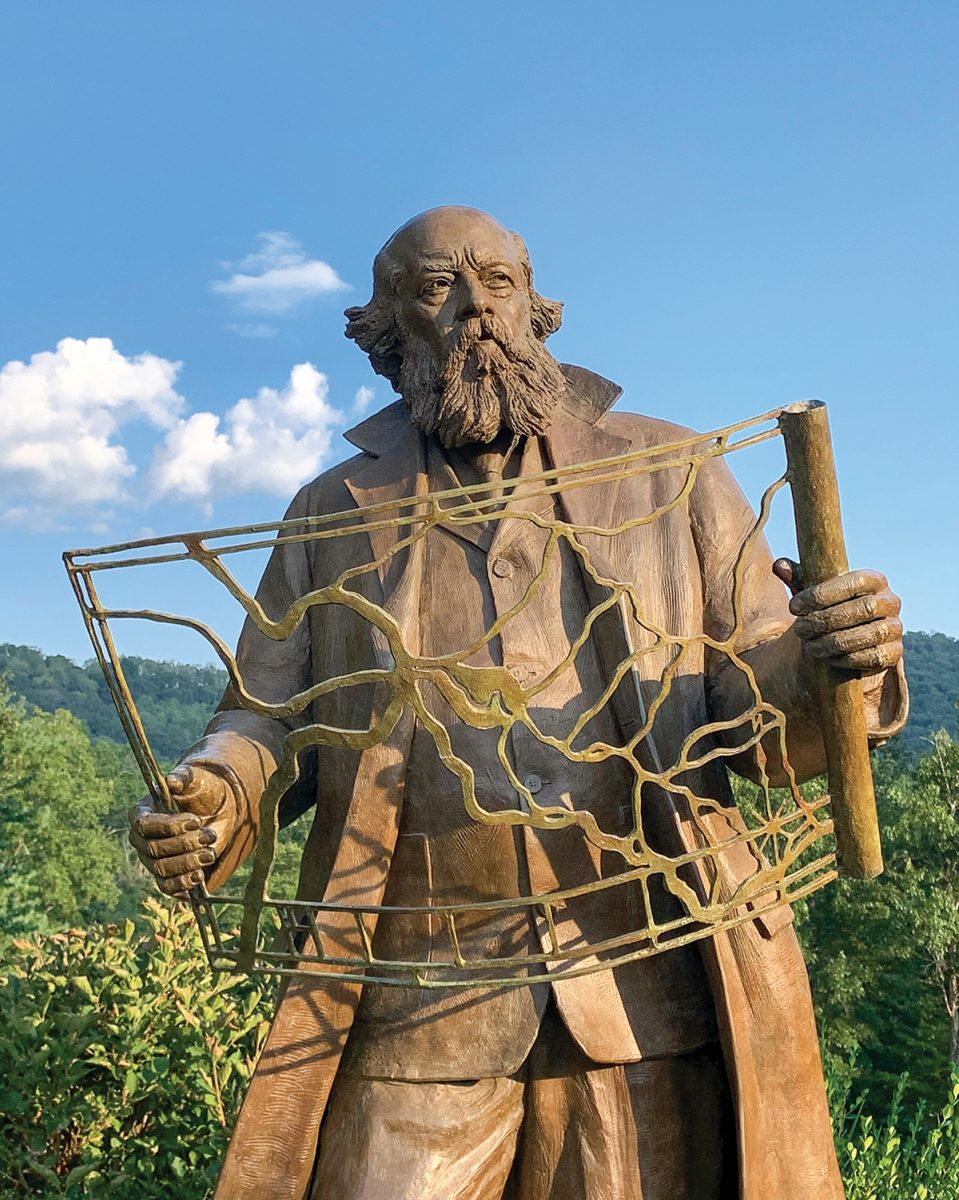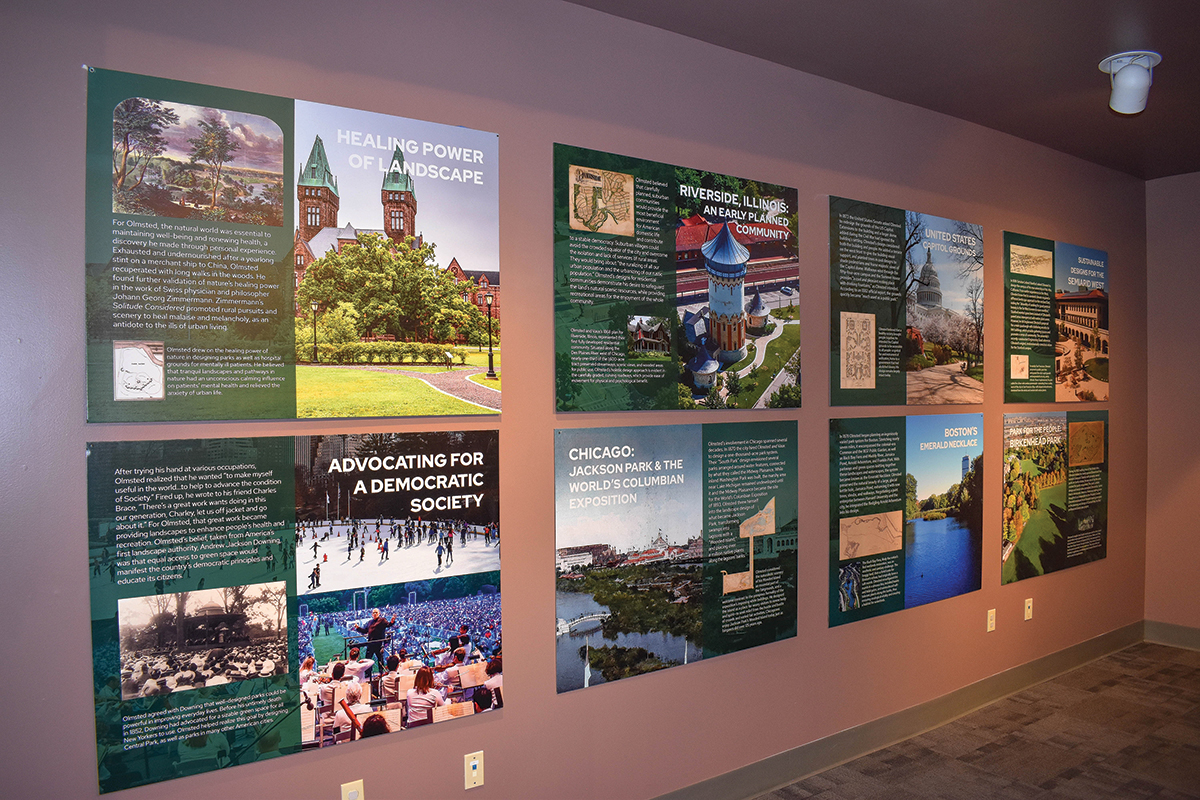Arboretum exhibit celebrates Frederick Law Olmsted’s 200th birthday

Frederick Law Olmsted at the Arboretum.
Most people receive store-bought cake and way too many Facebook notifications for their birthday. But Frederick Law Olmsted isn’t most people, though his 200th birthday celebration does include selfie-taking opportunities.
In honor of that occasion, North Carolina Arboretum is hosting Thanks FLO, a play on the late guest of honor’s initials. The exhibit, which opened in February and runs through May 8 (Olmsted’s birthday is April 26), is a salute to the man who designed America’s most iconic parks and gardens, among them the grounds of Biltmore Estate.
Though Olmsted, often referred to as The Father of Landscape Architecture, passed some 80 years before the Arboretum opened to the public, his legacy lives on there, too. “Many of its design principles were directly inspired by [Olmsted],” says Ashlee Lanier, exhibits curator.
That’s why, Lanier notes, the main road leading to the Arboretum is named Frederick Law Olmsted Way, and why there’s a bronze statue of Olmsted in the venue’s Blue Ridge Court. It’s also why, as a public historian, Lanier has spent the past two years researching Olmsted’s life.
His work is clear to see — however, “we wanted to celebrate his birthday by organizing an exhibit that delves into the history of who he was,” she explains.
Her findings paint the picture of a Renaissance man: a Staten Island farmer, a reporter for the New York Daily Times, a literary-journal editor, and a gold-mine manager. At 21, Olmsted even tried being a sailor, voyaging to China to sell dry goods.

“He almost didn’t survive,” says Lanier. “He, like many people journeying that far, got very sick.”
Undeterred, Olmsted continued his adventures with a six-month walking tour of Europe and the British Isles in his late twenties. During that trip, he visited Liverpool’s Birkenhead Park, a public park designed by English architect Joseph Paxton. Incredibly inspired, Olmsted later wrote, “I was ready to admit that in democratic America there was nothing to be thought of as comparable to this People’s Garden.”
But in 1857, Olmsted designed America’s own “People’s Garden” — Central Park in NYC. Between then and 1895, he completed 500 commissions, including Prospect Park in Brooklyn and Mount Royal Park in Montreal.
Thanks FLO offers a deeper look at these projects, as well as the personal history of Olmsted. The interactive exhibit also gives guests the opportunity to take selfies in front of Olmsted-inspired postcards; build a park with magnetic shrubs, flowers, bridges, and street lamps; and explore a virtual rendition of the Arboretum created in Minecraft, a sandbox video game. Interpretive signs will be on display throughout the gardens.
Obviously, Olmsted knew nothing about selfies or video games. In fact, the field of landscape architecture has changed so dramatically since the 1800s that few planners even use pencil and paper anymore. Instead, they now opt for CAD and other design programs, says Lanier.
But Olmsted’s belief that greenspaces like the Arboretum could act as the “lungs of the city,” quite literally breathing life into the people and landscape, is timeless.
“Though Olmsted designed these beautiful parks and gardens centuries ago,” says Lanier, “his core tenets continue to influence the Arboretum and landscape architecture at large.”
Thanks FLO will be on view through May 8 at the North Carolina Arboretum’s Baker Visitor Center Exhibit Hall and at select locations in the landscape. No additional cost to visitors beyond the Arboretum’s usual parking fee of $16 per personal vehicle for nonmembers. For more information, visit ncarboretum.org.
